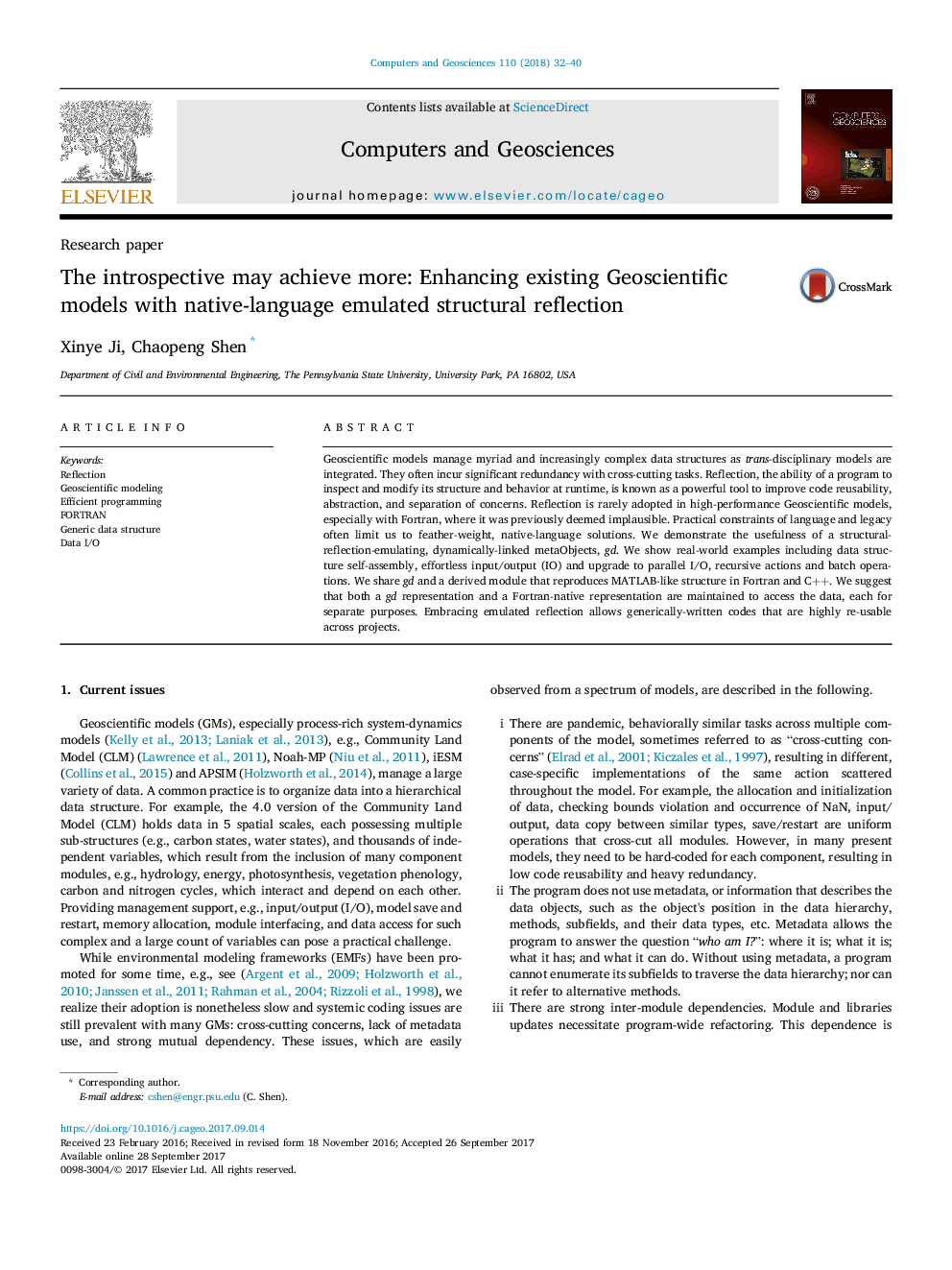| Article ID | Journal | Published Year | Pages | File Type |
|---|---|---|---|---|
| 6922268 | Computers & Geosciences | 2018 | 9 Pages |
Abstract
Geoscientific models manage myriad and increasingly complex data structures as trans-disciplinary models are integrated. They often incur significant redundancy with cross-cutting tasks. Reflection, the ability of a program to inspect and modify its structure and behavior at runtime, is known as a powerful tool to improve code reusability, abstraction, and separation of concerns. Reflection is rarely adopted in high-performance Geoscientific models, especially with Fortran, where it was previously deemed implausible. Practical constraints of language and legacy often limit us to feather-weight, native-language solutions. We demonstrate the usefulness of a structural-reflection-emulating, dynamically-linked metaObjects, gd. We show real-world examples including data structure self-assembly, effortless input/output (IO) and upgrade to parallel I/O, recursive actions and batch operations. We share gd and a derived module that reproduces MATLAB-like structure in Fortran and C++. We suggest that both a gd representation and a Fortran-native representation are maintained to access the data, each for separate purposes. Embracing emulated reflection allows generically-written codes that are highly re-usable across projects.
Keywords
Related Topics
Physical Sciences and Engineering
Computer Science
Computer Science Applications
Authors
Xinye Ji, Chaopeng Shen,
